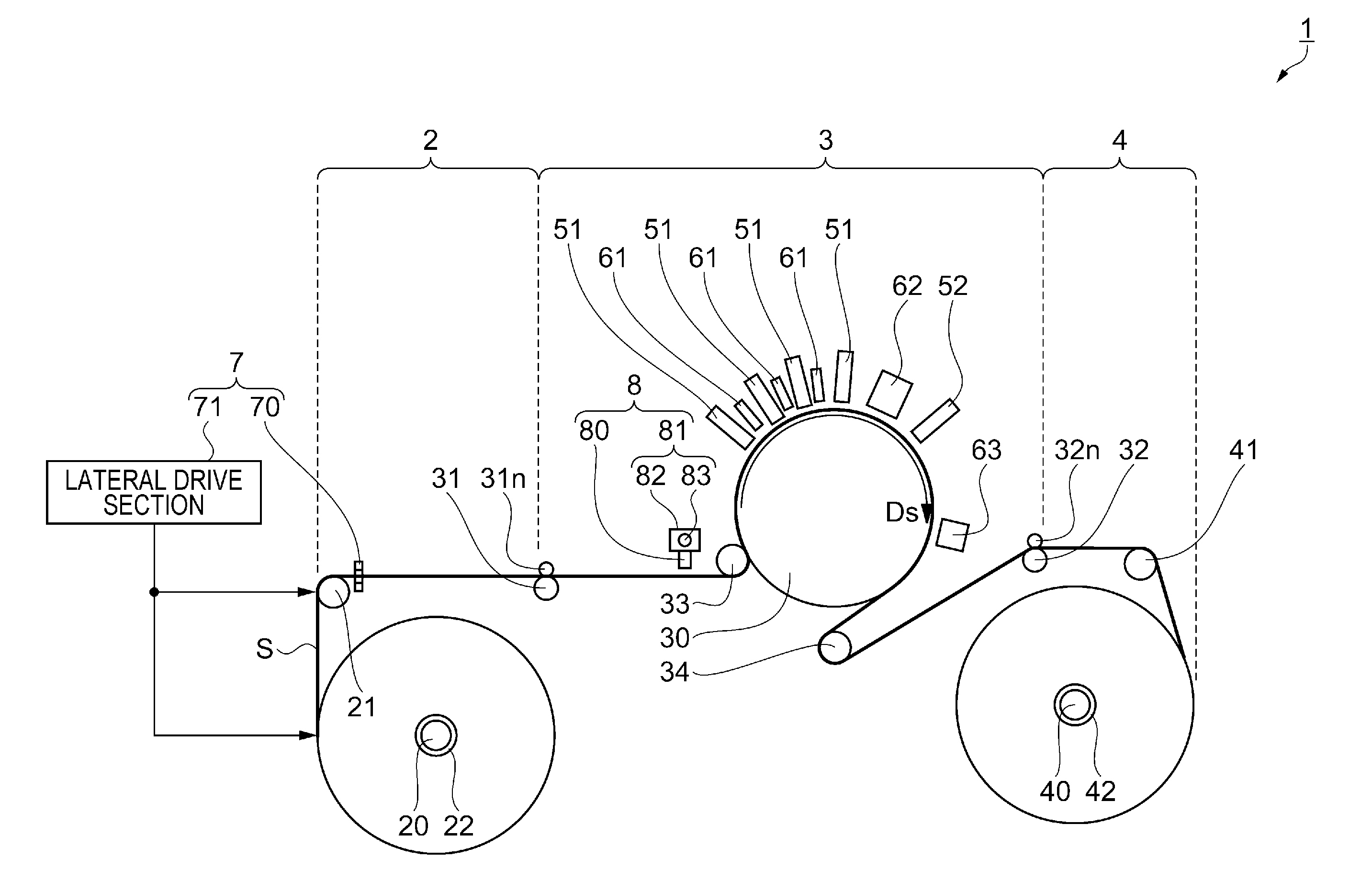Mark detection method using printing apparatus and printing apparatus
a printing apparatus and mark detection technology, applied in the direction of instruments, thin material handling, visual presentation, etc., can solve the problems of difficulty in detecting eye marks by the mark sensor, increased printing apparatus cost, and inability of the mark sensor to follow eye marks, etc., to achieve the effect of detecting eye marks stably
- Summary
- Abstract
- Description
- Claims
- Application Information
AI Technical Summary
Benefits of technology
Problems solved by technology
Method used
Image
Examples
first embodiment
[0030]FIG. 1 is a schematic view illustrating a configuration of a printer according to a first embodiment of the invention.
Outline of Printer
[0031]First, a description will be given of an outline of a printer 1 with reference to FIG. 1. The printer 1 is an example of a “printing apparatus” herein.
[0032]As illustrated in FIG. 1, the printer 1 includes a feeding axis 20 and a winding axis 40. A sheet S (web) is wound in a roll shape around both the feeding axis 20 and the winding axis 40 and stretched therebetween along a transport path. While the sheet S is being transported in a transport direction Ds from the feeding axis 20 to the winding axis 40, images are recorded on the sheet S. Types of sheets S are broadly divided into a paper-based sheet and a film-based sheet. Concrete examples of a paper-based sheet include a high-quality paper sheet, a cast paper sheet, an art paper sheet, and a coated paper sheet; concrete examples of a film-based sheet include a synthetic sheet, a PET...
second embodiment
[0097]FIG. 5 is a schematic view illustrating a configuration of a printer according to a second embodiment of the invention. A printer 10 according to the second embodiment differs from the printer 1 according to the first embodiment in including two edge sensors; edge sensors 70 and 70a. With reference to FIG. 5, the printer 10 according to the second embodiment will be described below mainly regarding differences from the printer 1. Constituent elements that are the same as in the first embodiment are denoted by the same reference characters and will not be described.
[0098]As illustrated in FIG. 5, the edge sensor 70 in the printer 10 is disposed between a driven roller 21 and a front drive roller 31, whereas the edge sensor 70a therein is disposed between the front drive roller 31 and a mark detecting section 8. The edge sensors 70 and 70a have the same configuration and each obtain information regarding the location of an edge of a sheet S in a width direction Dw by detecting t...
PUM
 Login to View More
Login to View More Abstract
Description
Claims
Application Information
 Login to View More
Login to View More - R&D
- Intellectual Property
- Life Sciences
- Materials
- Tech Scout
- Unparalleled Data Quality
- Higher Quality Content
- 60% Fewer Hallucinations
Browse by: Latest US Patents, China's latest patents, Technical Efficacy Thesaurus, Application Domain, Technology Topic, Popular Technical Reports.
© 2025 PatSnap. All rights reserved.Legal|Privacy policy|Modern Slavery Act Transparency Statement|Sitemap|About US| Contact US: help@patsnap.com



